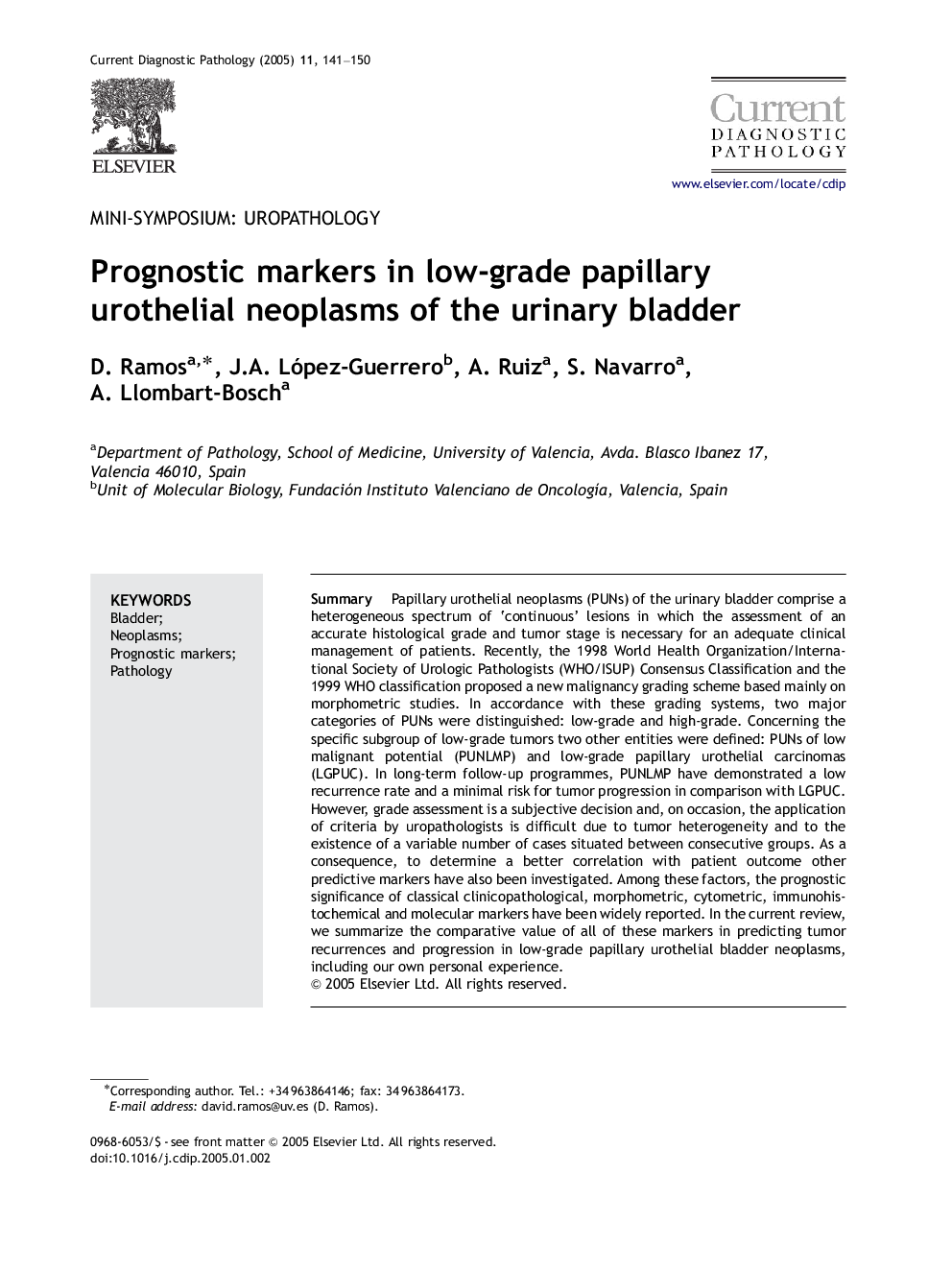| Article ID | Journal | Published Year | Pages | File Type |
|---|---|---|---|---|
| 9364970 | Current Diagnostic Pathology | 2005 | 10 Pages |
Abstract
Papillary urothelial neoplasms (PUNs) of the urinary bladder comprise a heterogeneous spectrum of 'continuous' lesions in which the assessment of an accurate histological grade and tumor stage is necessary for an adequate clinical management of patients. Recently, the 1998 World Health Organization/International Society of Urologic Pathologists (WHO/ISUP) Consensus Classification and the 1999 WHO classification proposed a new malignancy grading scheme based mainly on morphometric studies. In accordance with these grading systems, two major categories of PUNs were distinguished: low-grade and high-grade. Concerning the specific subgroup of low-grade tumors two other entities were defined: PUNs of low malignant potential (PUNLMP) and low-grade papillary urothelial carcinomas (LGPUC). In long-term follow-up programmes, PUNLMP have demonstrated a low recurrence rate and a minimal risk for tumor progression in comparison with LGPUC. However, grade assessment is a subjective decision and, on occasion, the application of criteria by uropathologists is difficult due to tumor heterogeneity and to the existence of a variable number of cases situated between consecutive groups. As a consequence, to determine a better correlation with patient outcome other predictive markers have also been investigated. Among these factors, the prognostic significance of classical clinicopathological, morphometric, cytometric, immunohistochemical and molecular markers have been widely reported. In the current review, we summarize the comparative value of all of these markers in predicting tumor recurrences and progression in low-grade papillary urothelial bladder neoplasms, including our own personal experience.
Related Topics
Health Sciences
Medicine and Dentistry
Pathology and Medical Technology
Authors
D. Ramos, J.A. López-Guerrero, A. Ruiz, S. Navarro, A. Llombart-Bosch,
